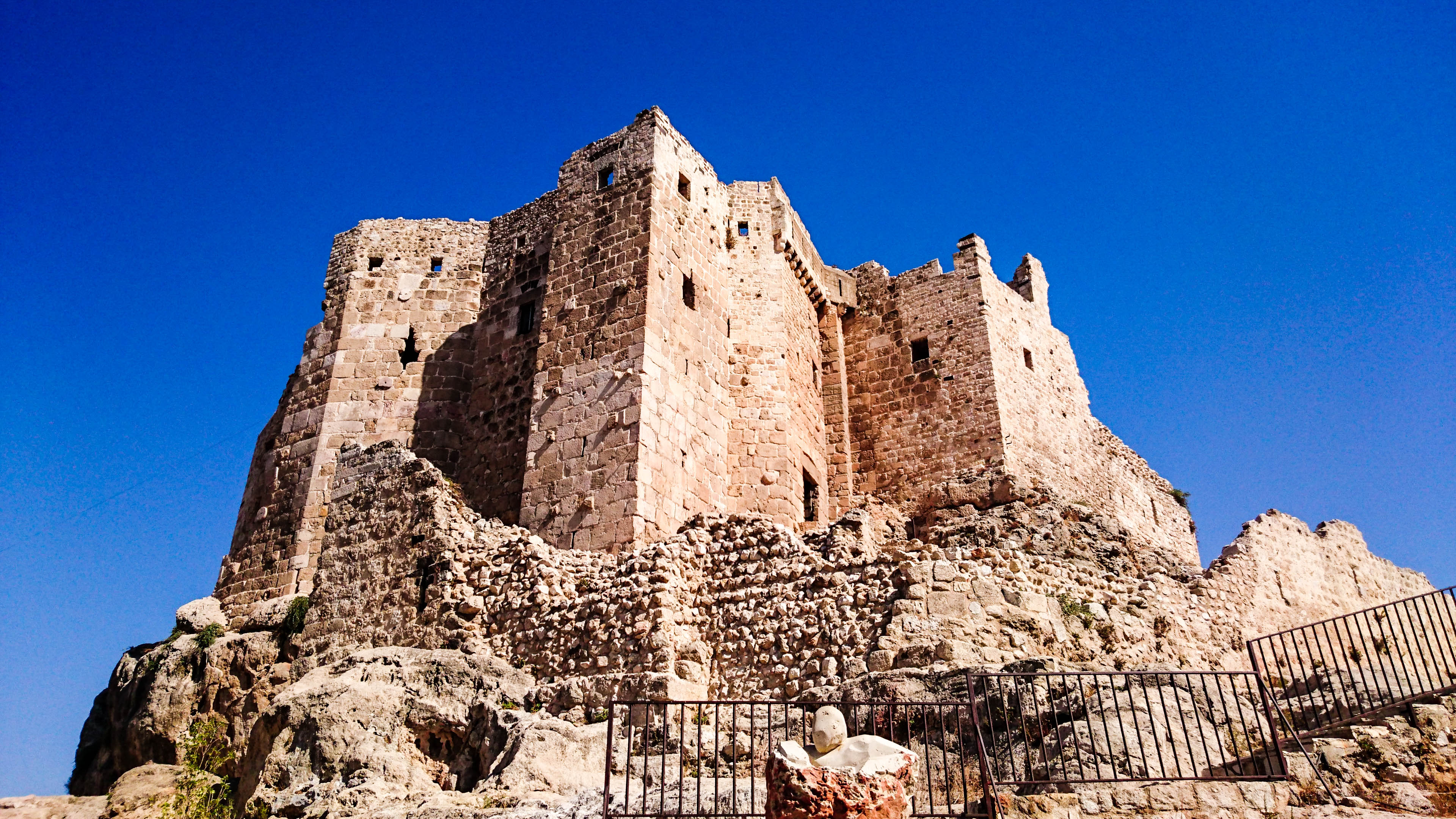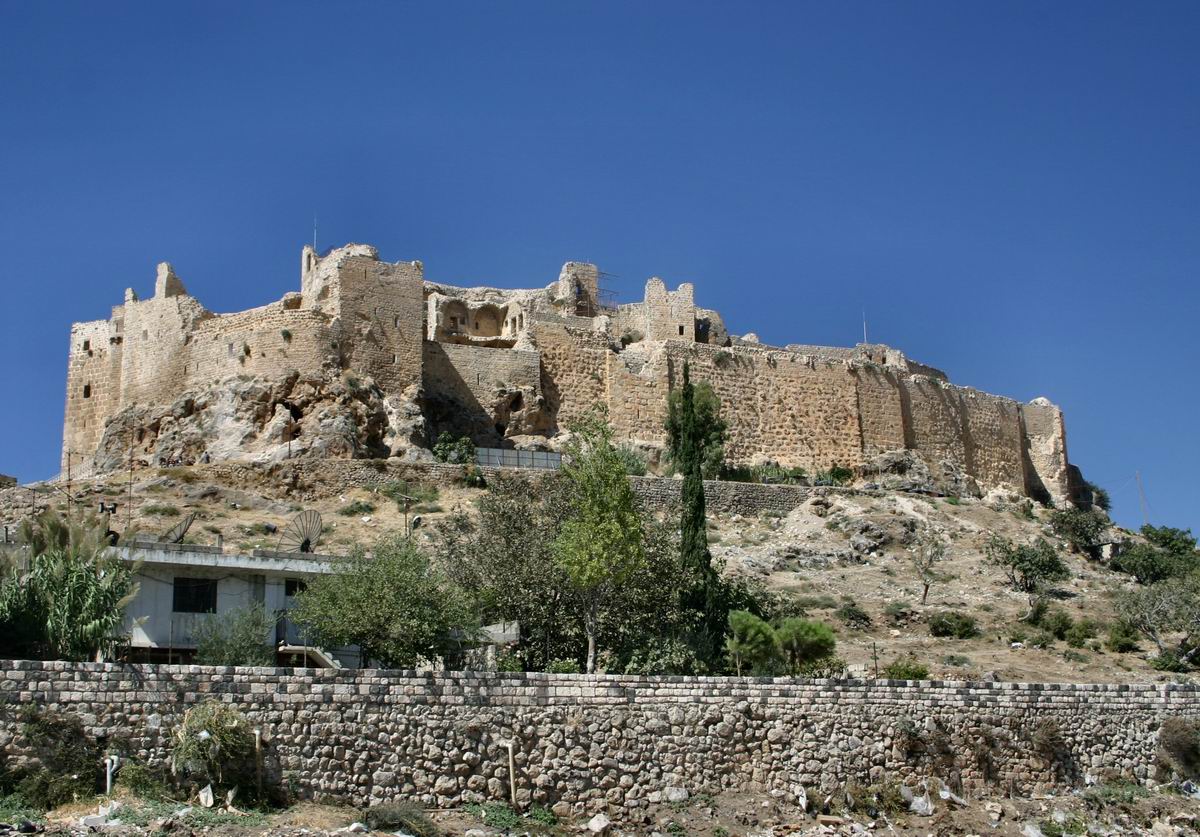|
Khawabi
Khawabi (), also spelled Qal'at al-Khawabi () is a village and medieval citadel in northwestern Syria, administratively part of the Tartus Governorate, located 20 kilometers northeast of Tartus and 12 kilometers east of al-Sawda. According to the Syria Central Bureau of Statistics, Khawabi had a population of 1,039 in the 2004 census.General Census of Population and Housing 2004 Syria Central Bureau of Statistics (CBS). Tartus Governorate. Its inhabitants are predominantly |
Order Of Assassins
The Order of Assassins (; ) were a Nizari Isma'ilism, Nizari Isma'ili order that existed between 1090 and 1275 AD, founded by Hasan-i Sabbah, Hasan al-Sabbah. During that time, they lived in the mountains of Persia and the Levant, and held a strict subterfuge policy throughout the Middle East, posing a substantial strategic threat to Fatimid Caliphate, Fatimid, Abbasid, and Seljuk Empire, Seljuk authority, and killing several Christian leaders. Over the course of nearly 200 years, they killed hundreds who were considered enemies of the Nizari Isma'ili state. The modern term assassination is believed to stem from the tactics used by the Assassins. Contemporaneous historians include ibn al-Qalanisi, Ali ibn al-Athir, and Ata-Malik Juvayni. The former two referred to the Assassins as ''batiniyya'', an epithet widely accepted by Isma'ilis themselves. Overview The Assassins were founded by Hassan-i Sabbah. The state was formed in 1090 after the capture of Alamut Castle in the Albo ... [...More Info...] [...Related Items...] OR: [Wikipedia] [Google] [Baidu] |
Al-Sawda
Al-Sawda (, also spelled Sauda or al-Soda) is a town in northwestern Syria, administratively part of the Tartus Governorate, located 15 kilometers northeast of Tartus. Nearby localities include Annazah to the northeast, Maten al-Sahel to the northwest, Husayn al-Baher to the west, Dweir al-Shaykh Saad to the southwest, Awaru to the south, Khirbet al-Faras to the southeast and Khawabi to the east. According to the Syria Central Bureau of Statistics, al-Sawda had a population of 4,064 in the 2004 census. It is the administrative center of the al-Sawda ''nahiyah'' ("sub-district") which contained 27 localities with a collective population of 32,925 in 2004.General Census of Population and Housing 2004 [...More Info...] [...Related Items...] OR: [Wikipedia] [Google] [Baidu] |
Jund Hims
''Jund Ḥimṣ'' (, " military district of Homs") was one of the military districts of the caliphal province of Syria. Geography The capital of Jund Hims was Homs, from which the district received its name. Its principal urban centres in the 10th century were Latakia, Palmyra, Jableh, Kafartab, Tarsus, Salamiyah, Bulunyas and the Fortress of Khawabi. The southern boundary line of Jund Hims laid immediately to the south of Qara, while its northern limit lay beyond the village of al-Qurayshiyya, a village on the Mediterranean coast. Eastward were the towns of Palmyra and al-Qaryatayn. History After the Muslim conquest of Syria in the 7th century CE, Caliph Umar () divided Syria into four districts, in which Jund Hims became the northernmost district. It initially encompassed the territory of Jund Hims proper, the territory of the future district of Jund Qinnasrin in far northern Syria, and the Jazira (i.e. Upper Mesopotamia). During and immediately following the Muslim ... [...More Info...] [...Related Items...] OR: [Wikipedia] [Google] [Baidu] |
Masyaf
Masyaf ( ') is a city in northwestern Syria. It is the center of the Masyaf District in the Hama Governorate. As of 2004, Masyaf had a religiously diverse population of approximately 22,000 Ismailis, Alawites and Christians. The city is well known for its large medieval castle, particularly its role as the headquarters of the Nizari Ismailis and their elite Assassins unit. Etymology Throughout the Islamic era and until the modern day, the Arabic name of the city was pronounced in a number of different ways by the inhabitants of the region as ''Maṣyaf'', ''Maṣyat'' or ''Maṣyad''. The Arabic name is a local pronunciation that evolved from the Assyrian name ''Manṣuate''. The "nṣw" in ''Manṣuate'' correlates with the Arabic "nṣṣ", which means "to set up", according to orientalist scholar Edward Lipinsky. Moreover, Lipinsky suggests that the Assyrian name was likely a configuration of the Assyrian word ''manṣuwatu'' which correlates with the Arabic word ''mina� ... [...More Info...] [...Related Items...] OR: [Wikipedia] [Google] [Baidu] |
Khirbet Al-Faras
Khirbat Al Faras () is a Syrian city administratively belonging to Tartus Governorate located in the Khawabi region, its distance from city of Tartus about 20 km. Khirbat Al Faras has an altitude of 300 meters and surrounded by two rivers. According to the Syria Central Bureau of Statistics, Khirbet al-Faras had a population of 1,113 in the 2004 census.General Census of Population and Housing 2004 Syria Central Bureau of Statistics (CBS). Tartus Governorate. Its inhabitants are predominantly |
Bimalkah
Bimalkah (, also spelled Bmalkyeh) is a village and suburb in northwestern Syria, administratively part of the Tartus Governorate, located 10 kilometers northeast of Tartus. Nearby localities include Dweir al-Shaykh Saad to the west, al-Shaykh Saad and al-Khreibat to the southwest, Tayshur to the southeast, al-Baqaa and Hamin to the east, Khawabi and Khirbet al-Faras to the northeast, Awaru and al-Sawda to the north and Husayn al-Baher to the northwest. According to the Syria Central Bureau of Statistics, Bimalkah had a population of 817 in the 2004 census.General Census of Population and Housing 2004 [...More Info...] [...Related Items...] OR: [Wikipedia] [Google] [Baidu] |
Al-Qamsiyah
Al-Qamsiyah () is a town in northwestern Syria, administratively part of the Tartus Governorate, located north of Tartus. Nearby localities include al-Annazeh, Maten al-Sahel and Husayn al-Baher to the southwest and Khawabi, Khirbet al-Faras and al-Shaykh Badr to the southeast. According to the Syria Central Bureau of Statistics (CBS), al-Qamsiyah had a population of 2,244 in the 2004 census.General Census of Population and Housing 2004 Syria Central Bureau of Statistics (CBS). Tartus Governorate. Its inhabitants are predominantly |
Al-Annazah, Tartus District
Al-Annazah () is a Syrian village located in Tartus District, Tartus. According to the Syria Central Bureau of Statistics (CBS), Al-Annazah had a population of 1,944 in the 2004 census. Its inhabitants are all Alawites Alawites () are an Arab ethnoreligious group who live primarily in the Levant region in West Asia and follow Alawism, a sect of Islam that splintered from early Shia as a ''ghulat'' branch during the ninth century. Alawites venerate Ali .... References Populated places in Tartus District {{TartusSY-geo-stub ... [...More Info...] [...Related Items...] OR: [Wikipedia] [Google] [Baidu] |
Phoenicia
Phoenicians were an Ancient Semitic-speaking peoples, ancient Semitic group of people who lived in the Phoenician city-states along a coastal strip in the Levant region of the eastern Mediterranean, primarily modern Lebanon and the Syria, Syrian coast. They developed a Maritime history, maritime civilization which expanded and contracted throughout history, with the core of their culture stretching from Arwad in modern Syria to Mount Carmel. The Phoenicians extended their cultural influence through trade and colonization throughout the Mediterranean, from Cyprus to the Iberian Peninsula, evidenced by thousands of Canaanite and Aramaic inscriptions, Phoenician inscriptions. The Phoenicians directly succeeded the Bronze Age Canaanites, continuing their cultural traditions after the decline of most major Mediterranean basin cultures in the Late Bronze Age collapse and into the Iron Age without interruption. They called themselves Canaanites and referred to their land as Canaan, but ... [...More Info...] [...Related Items...] OR: [Wikipedia] [Google] [Baidu] |
Homs
Homs ( ; ), known in pre-Islamic times as Emesa ( ; ), is a city in western Syria and the capital of the Homs Governorate. It is Metres above sea level, above sea level and is located north of Damascus. Located on the Orontes River, Homs is also the central link between the interior cities and the Mediterranean coast. Before the Syrian civil war, Homs was a major industrial hub with a population of at least 652,609 people in 2004, it was the third-largest city in Syria after Aleppo to the north and the capital Damascus to the south. Its population reflected Syria's general religious diversity, composed of Sunni and Alawite Muslims, and Eastern Christianity, Christians. There are a number of historic mosques and churches in the city, and it is close to the Krak des Chevaliers castle, a World Heritage Site. Homs did not emerge into the historical record until the 1st century BC in the Seleucid Empire, becoming the capital of a kingdom ruled by the Emesene dynasty who gave the ... [...More Info...] [...Related Items...] OR: [Wikipedia] [Google] [Baidu] |
Byzantine Empire
The Byzantine Empire, also known as the Eastern Roman Empire, was the continuation of the Roman Empire centred on Constantinople during late antiquity and the Middle Ages. Having survived History of the Roman Empire, the events that caused the fall of the Western Roman Empire in the 5th centuryAD, it endured until the fall of Constantinople to the Ottoman Empire in 1453. The term 'Byzantine Empire' was coined only after its demise; its citizens used the term 'Roman Empire' and called themselves 'Romans'. During the early centuries of the Roman Empire, the western provinces were Romanization (cultural), Latinised, but the eastern parts kept their Hellenistic culture. Constantine the Great, Constantine I () legalised Christianity and moved the capital to Constantinople. Theodosius I, Theodosius I () made Christianity the state religion and Greek gradually replaced Latin for official use. The empire adopted a defensive strategy and, throughout its remaining history, expe ... [...More Info...] [...Related Items...] OR: [Wikipedia] [Google] [Baidu] |


